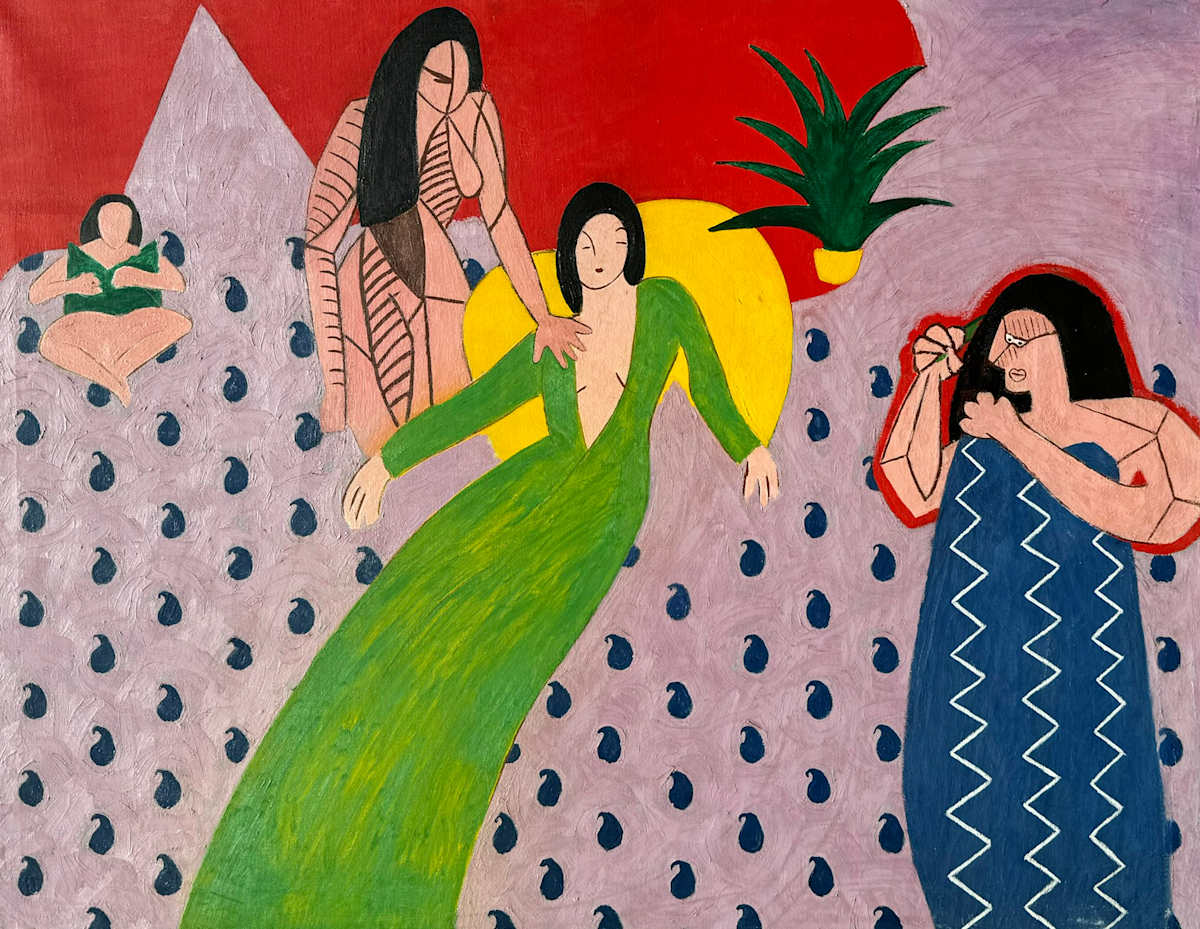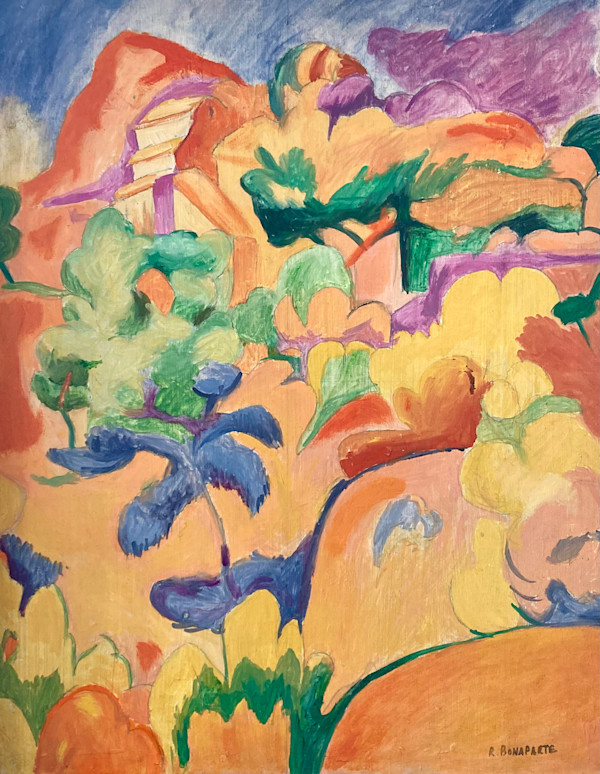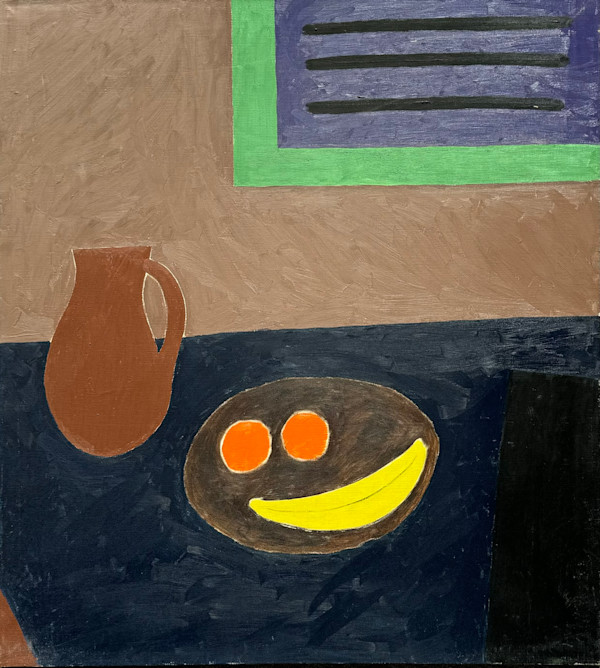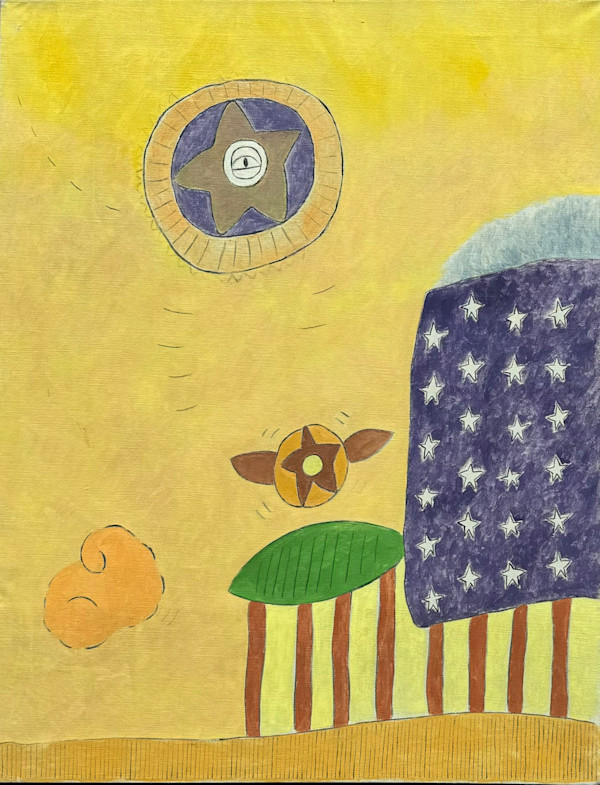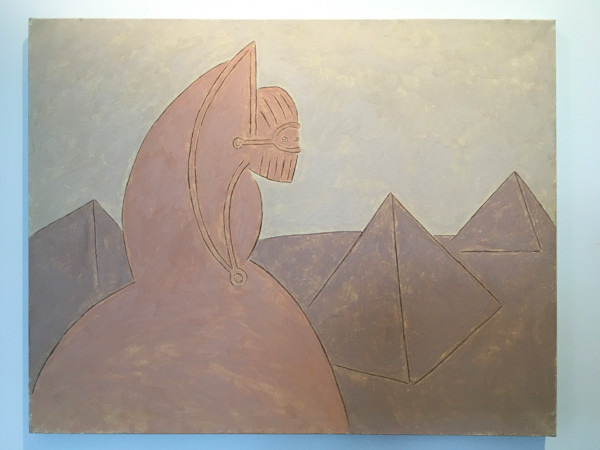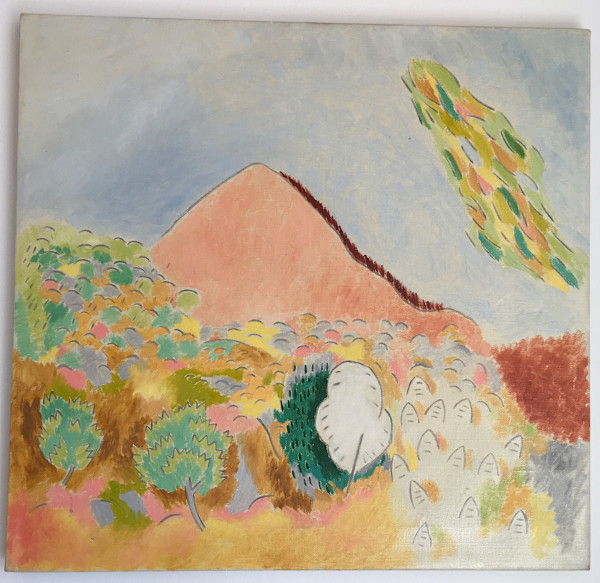- Robert Bonaparte
- Oasis (Four Figures), 1980
- Oil on Linen
- 31 x 40 x 1 in (78.74 x 101.6 x 2.54 cm)
- Framed: 32 x 41 x 1.25 in (81.28 x 104.14 x 3.18 cm)
- $11,000
This 32" x 41" oil on linen was painted by Robert Bonaparte in 1980. The painting consists of four figures set against a backdrop of abstract elements and bold colors. In the background, on the far left, a figure is depicted in a seated position, holding some green ambiguous object. Adjacent to this figure and positioned more in the foreground of the work, stands another figure, marked by brown lines. This figure is captured in movement as its hand reaches towards yet another figure just to the right. This form is a large, dominating and centrally focused figure, dressed in a long green garment, set against a patch of bright yellow. To the right, another figure, whose head is highlighted with a bright red, seems to engage with an object in its hand. Each of the four figures have black hair and very minimalist facial and anatomical features; the last figure described has the most representational features, still abstract in comparison to realistic works. The background is a tapestry of geometric shapes in hues of light purple and red, while a sea of blue dots blankets the canvas’s lower region. The overall composition is devoid of any discernible narrative, focusing instead on a rich tapestry of color and form.
In the vibrant aftermath of WWII, amidst an Oklahoma City blooming with cultural resurgence thanks to New Deal initiatives, a young Robert Bonaparte found his calling alongside his childhood friend and neighbor, Ed Ruscha. While Ruscha's works found global acclaim, Bonaparte's creations remained a treasured secret, known only to a select group of collectors and friends. Born in 1933 in Oklahoma City, Robert Bonaparte emerged as a pivotal yet under-recognized figure in the abstract art scene. From an early age, Bonaparte formed a profound friendship and artistic dialogue with Ed Ruscha, a relationship that would influence both artists' careers. After graduating from the University of Arizona in 1956, Bonaparte's thirst for knowledge took him to Rome, Italy, where he furthered his studies in art, broadening his perspective and technique. In 1959, alongside a cohort of Oklahoma artists, he relocated to California, where his artistic expression flourished. Bonaparte's work, known for its vibrant landscapes and introspective still lifes, has graced galleries worldwide, from Galleria "La Vetrina" in Rome to the Fred Jones Jr. Museum of Art in Norman, Oklahoma, showcasing his international acclaim and versatility. Despite the quieter recognition compared to his contemporaries, Bonaparte's contributions to the art world are invaluable.
- Subject Matter: Human Figures

